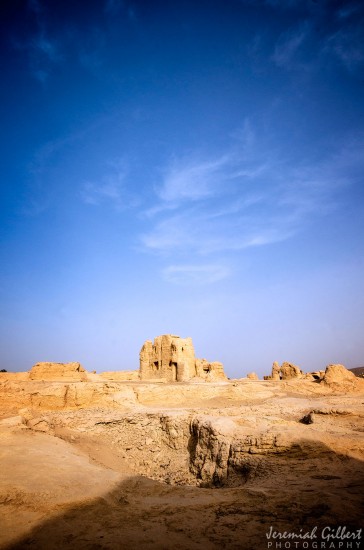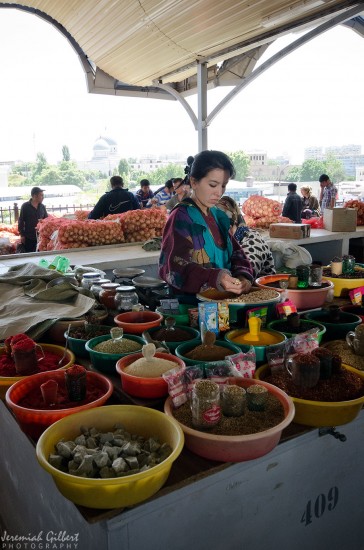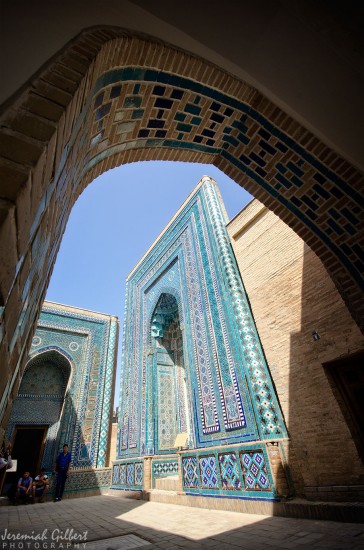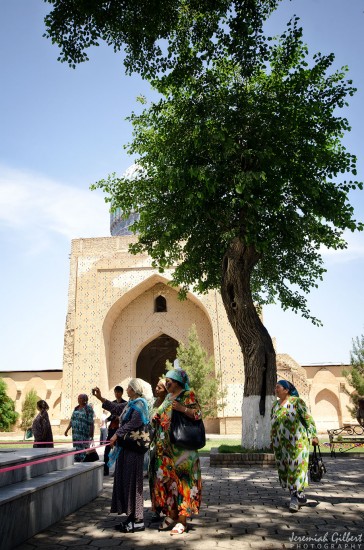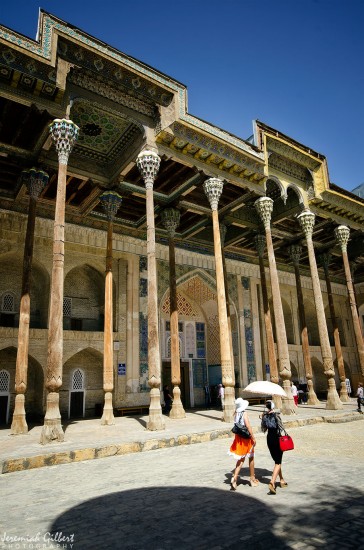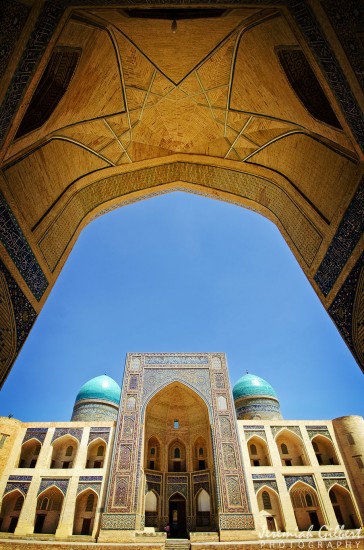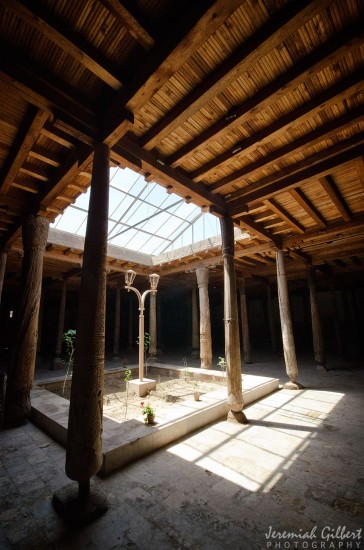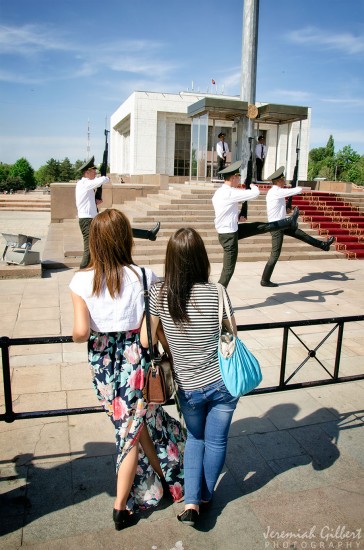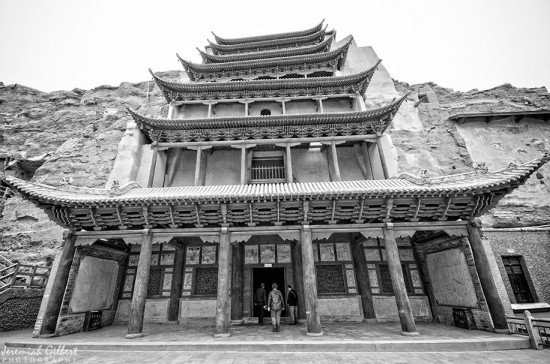
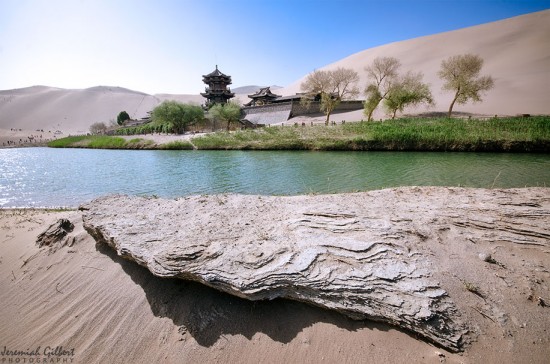
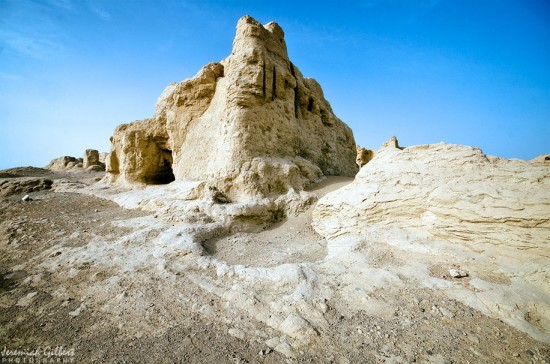
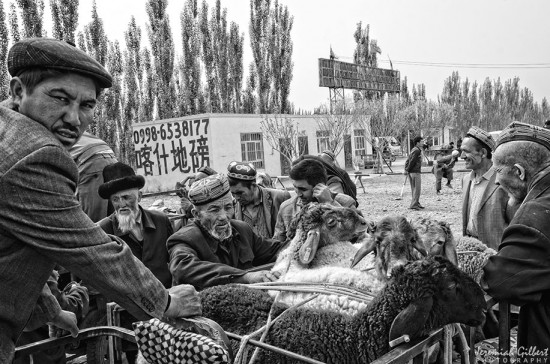
Exploring Central Asia with a Nikon D7000 by Jeremiah Gilbert (Website | Facebook | 500px):
I like to travel light, usually just one camera and two lenses (a wide angle and a moderate zoom). I travel with a Nikon D7000 as it, along with my Sigma 10-20mm lens, is noticeably smaller and lighter than my D600 equipped with a Nikkor 16-35mm lens. It would also be considerably cheaper to replace should it be lost or stolen. These go into my Think Tank Retrospective 5 bag, which is light enough to carry all day and doesn’t look like a camera bag.
It was this combination that I took with me to Central Asia last spring, beginning in Xi’an, China and ending up in Tashkent, Uzbekistan. It was a month retracing the Silk Road, or at least one route of the Silk Road. Besides some French and German tourists, this is an area that sees few Westerners and the only region in my varied travels where I was asked to pose for photos with locals.
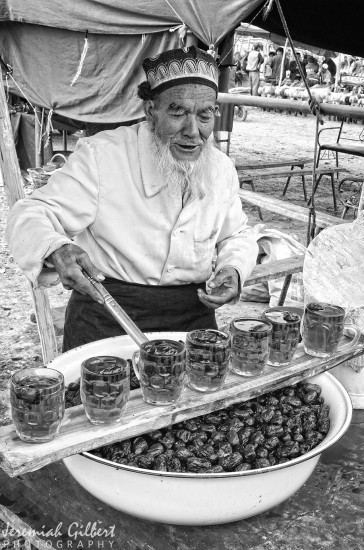
Traveling west of Xi’an, one is reminded of the vastness of China. It is a 22-hour train ride from Xi’an to Dunhuang, leaving at 11am and arriving at 9am the following morning. Dunhuang is known for its Mogao Grottoes, a system of 492 cave temples spanning 1000 years, and its Crescent Lake situated amidst rolling sand dunes. Being China, the sand dunes include ladders draped along them to make them easier to climb.
It’s another 9-hour train ride to Turpan, this one leaving from a frigid platform in the middle of the night from a remote station. Here is where China becomes less Asian and more Middle Eastern. Arabic starts to be heard far more than Mandarin and the people look more Central Asian than Han Chinese. Among many other sites, Turpan serves as a gateway to the ancient city of Jiaohe, located at the foot of the Flaming Mountain. In the 14th century, the city was damaged and abandoned due to warfare between Mongolian aristocrats and Uigurs.
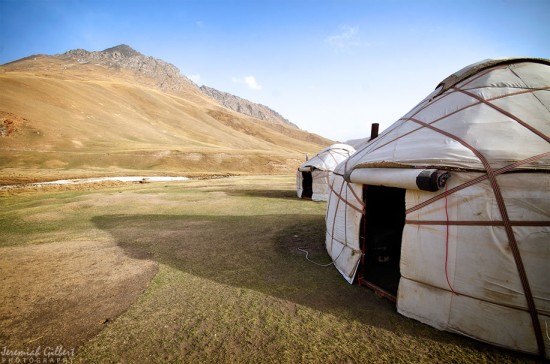
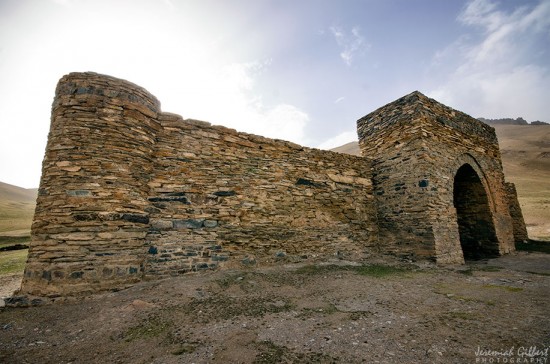
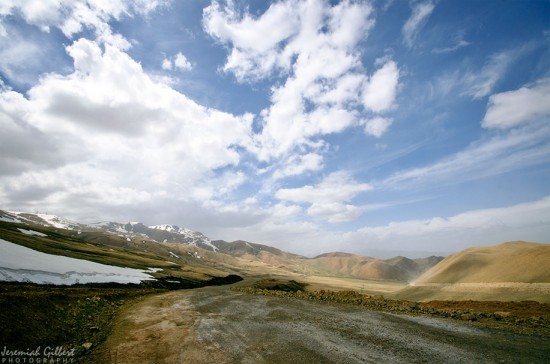
Kashgar is the westernmost city in China, located near the border with Tajikistan and Kyrgyzstan. Here I shift into street photographer mode while attending their Sunday animal bazaar. Along with my wide angle, I travel with a medium telephoto lens, which I switched to for this experience (in this case, a Nikkor 18-105mm). There are rows and rows of trucks with animals, ranging from goats to camels, along with a back lane used to run horses. There are also makeshift eateries serving food and drink, as negotiations can be lengthy.
It’s a long drive from China to Kyrgyzstan along a 100km no-man’s land. After several Chinese checkpoints, the Kyrgyzstan checkpoint is quiet and the guards don’t seem to know what to do with the group I’m traveling with, so they line us up by nationality and have us sing our national anthems. This seems to please them and soon our passports are stamped and we’re officially in the country.
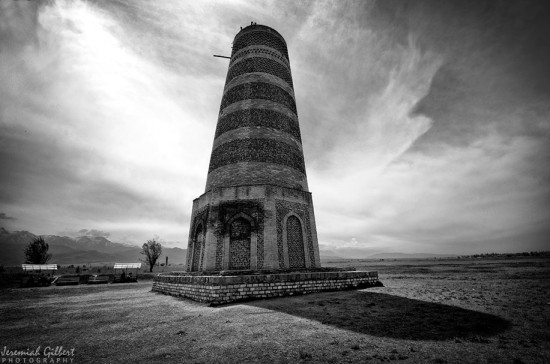
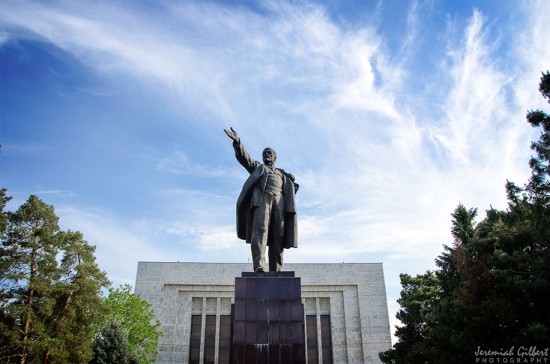
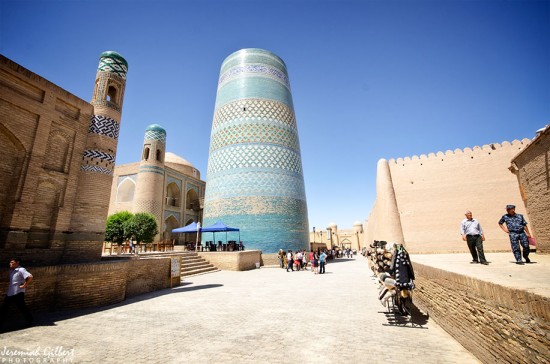
I spend my first night in Kyrgyzstan in a yurt beside the ruins of Tash Rabat, a well-preserved 15th century stone caravanserai. One comes to Kyrgyzstan for its natural treasures, not its ruins, so it is nice to be so close to one of the few there are to find. Another is Burana Tower, near the town of Tokmok. The tower, along with some grave markers, is about all that remains of the ancient city of Balasagun.
The city of Karakol began as a Russian military outpost founded in 1869. In the 1880s, Karakol’s population surged with an influx of Dungans, Chinese Muslims fleeing warfare in China. As a result, one finds a Russian Orthodox Church only a few blocks from Dungan Mosque, decidedly Chinese in its architectural style.
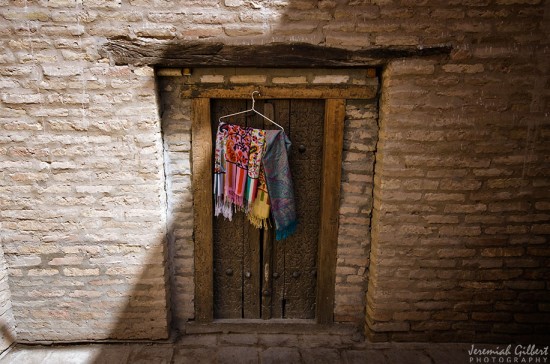
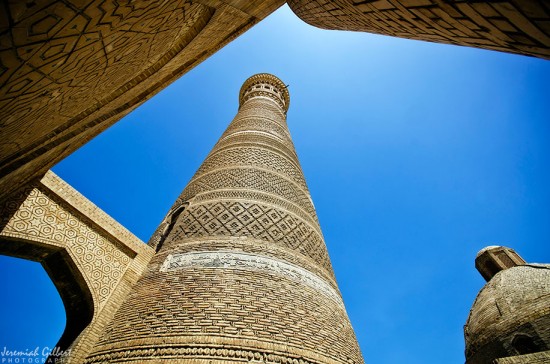
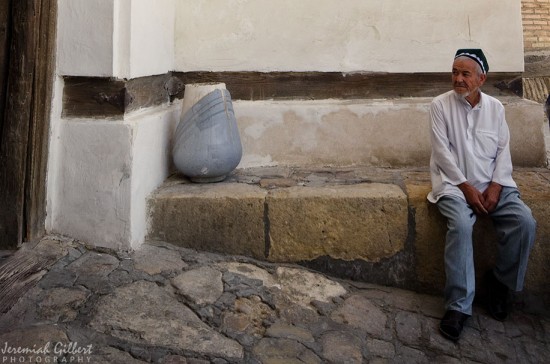
Bishkek, Kyrgyzstan’s capital city, is an industrial break from the country’s overflowing natural beauty and retains a decided Soviet feel with its grand squares and monuments. This is in stark contrast with Uzbekistan, my next destination, which has been making a conscious attempt to remove all remnants of its Soviet past. The Cyrillic alphabet is all but gone and there’s hardly a hint of Soviet architecture in the capital city of Tashkent.
The architecture that is found in Uzbekistan is a wide-angle shooters dream. There is such intricacy to try to capture but it seems out of context if zoomed in on, and there are wonderful lines to work with. There is also the history of the land, from its association with Islam and Tamerlane to its ancient cities and trading routes. Markets can be found in every city, some dating back centuries.
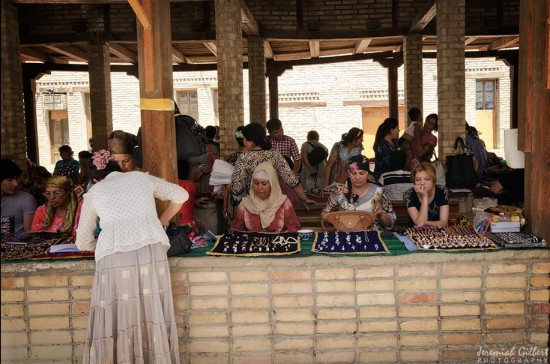
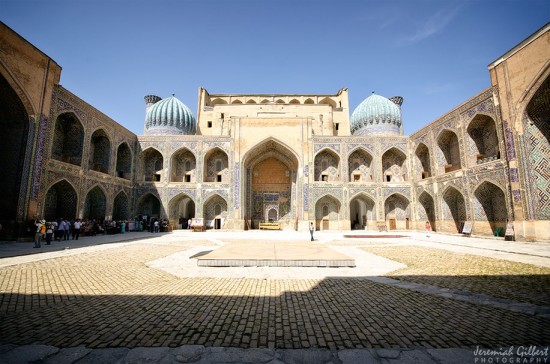
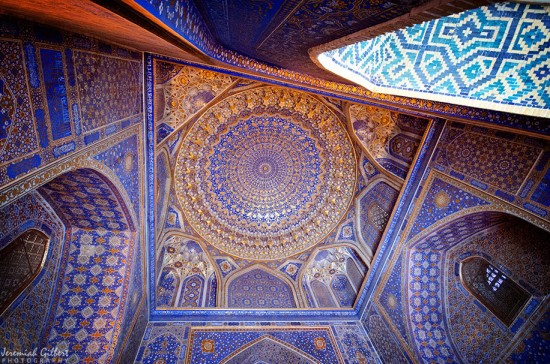
After arriving in Tashkent for a night, I head to Khiva, an ancient walled oasis city famous for its unfinished blue minaret. Along with its unfinished minaret, one comes across Djuma Mosque, which retains 112 columns taken from ancient structures. One can also climb atop the city’s wall for panoramic views if they can find the right man behind the right door down the right turn to give their money to.
The region around Bukhara has been inhabited for at least five millennia, and the city has existed for at least half that time. Due to its location on the Silk Road, the city has long been a center of trade, scholarship, culture, and religion. Its Kalân Mosque, for instance, was completed in 1514 and is able to accommodate 12 thousand people. In Bukhara’s market area I buy a foldable knife that I’m not sure I’ll be able to get back into the US, but the seller has a warm personality and an inviting smile. Centuries of inherited practice, I’m sure.
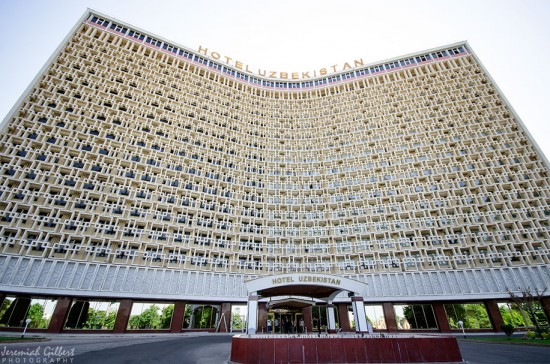
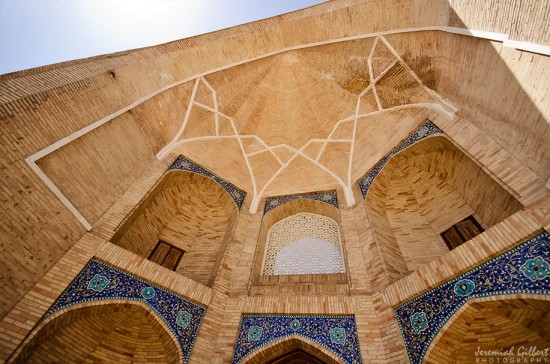
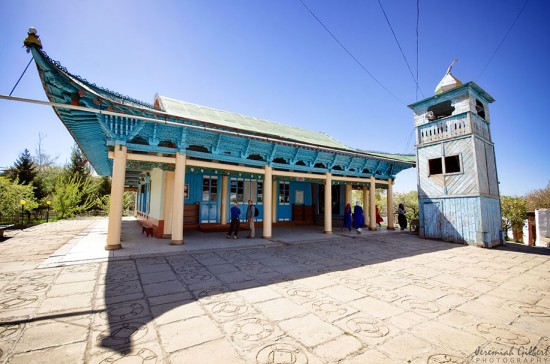
Samarkand has carefully preserved the traditions of ancient crafts: embroidery, silk weaving, engraving on copper, ceramics, and painting on wood. It is also home to Guri Amir, the mausoleum of the Asian conqueror Tamerlane. Guir Amir served as the precursor and model for later great Mughal architecture tombs, including the Taj Mahal. One also comes across Shah-i-Zinda, a necropolis complex formed over nine (from 11th till 19th) centuries, which now includes more than twenty buildings.
My travels end back in Tashkent, whose Hotel Uzbekistan retains a modern Soviet style. Inside, when exchanging money, I am reminded by the woman behind the glass that I will not be able to exchange it back, so be sure to spend it. “I’m only in the country one more day,” I reply, as a means of explaining the small amount I had exchanged. “Good,” she replies, “be sure to spend it all.” Guess I’ll go explore some more markets.
